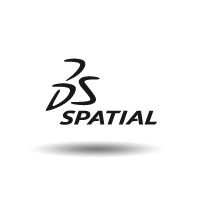
Deelip Menezes broke the news Tuesday morning from the Spatial European Forum. (Read Really Big News from Dassault and Spatial) It’s now possible for anyone to license the technology to put 3D design applications on the web. Dassault and Spatial are making it happen.
The news has massive implications for the CAx and design Industries. So, we followed up with Deelip to get his insight. We’ll also take a look at the first rendition of the app put out by Spatial and give it a spin. Oh, did I mention you can too?
Well now, let’s go back a little bit… Spatial, founded in 1986, is best know for the ACIS modeling kernel, first released in 1989. Prior to Spatial being purchased by Dassault Systemes in 2000, ACIS was an openly published system. Since then, it has been licensed to software developers wanting to use it’s 3D modeling engine and cross-platform architecture. Spatial also develops the 3D InterOp file translation tool, the RADF (Rapid Application Development Framework), which gives developers the edge when bridging their PC apps with the web, and now licenses the CGM (Convergence Geometric Modeler) kernel developed by Dassault for their V6 platform.
What’s happened?
From Deelip’s first post on the news:
Dassault Systemes is giving its CGM modeling kernel (the technology that powers CATIA V6) to Spatial so that it can license it to other CAD vendors and application developers. Licensing CGM is just the beginning. Dassault Systemes is also licensing its CAD in the Cloud technology through Spatial to whoever wishes to move their CAD applications to the Cloud.
…and Spatial has demonstrated a CAD application on the cloud, as you’ll see below.
What does it mean?
On the surface, it doesn’t seem like this would have much of an effect on the ol’ daily grind behind that workstation, but as Deelip points out, it’s the development of what you use that will catch the impact right in the head, which in turns leads right back to you. Here’s what Deelip had to say.
How will this affect software developers?
The effect on users will not be immediate or may not even be in the near future. This is more interesting to developers since they now get the option of using the powerful CGM modeling kernel from none other than Dassault Systemes. Spatial has not yet disclosed anything on CGM pricing yet. But I have some information that the pricing of CGM and ACIS will more or less be the same. Spatial says that licensing CGM is only the first step and I believe them. The future will reveal what other Dassault Systemes technologies will be made available to the CAD industry. As far as the Cloud announcement is concerned, I don’t think developers are going to start creating Cloud versions of their products first thing tomorrow morning. The infrastructure to support CAD on the Cloud on a large scale is still to see the light of day. But Spatial has given developers a kind of a sneak preview of how they will be able to support the Cloud if and when they choose to do so. They have also shown that developers will not need to rewrite their applications to suit the Cloud since RADF has been reorganized to make is pretty simple to support the desktop as well as the Cloud using a common code base.
How will this affect the CAD Industry as a whole?
Actually I am not worrying about how these couple of Spatial announcements will affect the CAD industry. Having CGM out there is a good thing, but I doubt that it will be game changing. The time for CAD on the Cloud is not yet here. I am more interested to see what Dassault Systemes is going to do next. To me they appear to be a company that has gone bananas. And I mean that in a good way. They are acquiring web/enterprise search engine companies. They are acquiring companies that are into embedded systems. They have entered the AutoCAD clone market for Chirst’s sake. I am not exactly sure where they are headed with 3DVIA, but I get the feeling that it is destined for greater things. They are looking at the new generation of users in ways that other CAD vendors are not. They do not look like a company that will do more of the same. And that is definitely bound to change the CAD industry, although I am not sure how. I cannot remember the last time I saw a company pull itself in so many directions like this.
The Spatial 3D Web App
Spatial’s web-based 3D is currently called SPAWeb3D (or ACIS Live depending where you look). It requires Internet Explorer, Javascript and a viewport plugin developed Spatial. You can try out the designing via the browser here http://web3d.spatial.com. Here’s what it looks like right now.



This is all very interesting. What are your thoughts?



